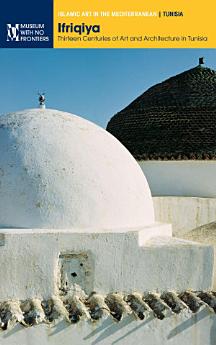Ifriqiya: Thirteen Centuries of Art and Architecture in Tunisia
Jamila Binous · Naceur Baklouti · Aziza Ben Tanfous · Kadri Bouteraa · Mourad Rammah · Ali Zouari
Jun 2013 · Museum With No Frontiers, MWNF (Museum Ohne Grenzen)
5.0star
1 reviewreport
Ebook
443
Pages
family_home
Eligible
info
reportRatings and reviews aren’t verified Learn More
About this ebook
Tunisia offers a synoptic and chronological vision spanning thirteen centuries of Islamic History. After the creation of Kairouan at the rise of the Islamic era – during which time local traditions were enriched with the distant souvenir of Samarra – successive dynasties embellished the architectural language of the area with their own unique artistic expressions. The Aghlabid monuments, for example, offer the dual physiognomy of Christian art revisited by oriental craftsmanship, which was in turn inspired by the artistic language of Egypt and Mesopotamia. The ornamental innovations of the Fatimid caliphate that followed, was then a source of inspiration re-visited during the Zirid era. The long centuries of Hafside prosperity, stimulated by the arrival of exiled Andalusians, signalled the creative pinnacle of an art of symbiosis: Hispanic-Maghreb art. This successful cross-fertilisation of local austerity married with Cordoban-Umayyad splendour, would in itself promote an incredible architectural renewal until Ifriqiya became part of the Ottoman Empire. Tunis <i>medina</i> is a<br> good place to witness the creation of a typically Muslim civic model, facilitating an<br> image in the mind’s eye of the luxury of daily life in the pleasure palaces of the <br>surrounding environment. Between Bizerte and Ghar el Melh, the emphasis is placed <br>on the prosperous Andalusian villages, whereas on the last promontories of the <br>Djebel Dyr, El-Kef illustrates the dual destiny, military and spiritual, of a highly <br>influential centre for Sufism. The princely towns of Raqqada and Mahdia and the <br><i>ribat</i> towns of Monastir and Sousse offer yet other manifestation of artistic <br>exuberance. Sfax, being Tunisia's true gate to the Levant and the most southern nomadic land, witnessed the <i>caravanserai</i>s (of Gafsa, Tozeur, Nefta) and the <br>troglodytic <i>ksour</i>s that offer so perfect a response to the hostility of a semi-<br>desert environment and, in contrast, the serene functionality of Jerbian architecture <br>which summarises the rigorous authenticity of insular Ibadism. Tunisia unravels each<br> of its expressions in a synchronous spiral, a revolution that encouraged the <br>continuity of previous traditions.
Ratings and reviews
5.0
1 review
Rate this ebook
Tell us what you think.
Reading information
Smartphones and tablets
Install the Google Play Books app for Android and iPad/iPhone. It syncs automatically with your account and allows you to read online or offline wherever you are.
Laptops and computers
You can listen to audiobooks purchased on Google Play using your computer's web browser.
eReaders and other devices
To read on e-ink devices like Kobo eReaders, you'll need to download a file and transfer it to your device. Follow the detailed Help Center instructions to transfer the files to supported eReaders.




